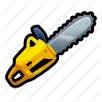9 Petrol Log Splitter Maintenance Tips for First-Time Users
Whether you are using a petrol log splitter or an electric one, log splitters can definitely save a great deal of effort and time compared to manually dividing logs. While chopping wood for petrol can be gratifying, especially if you’re using wood from your premises, manually splitting logs with an axe can drain you out. By taking advantage of a log splitter, you can have all the firewood you want without breaking a sweat.
A petrol log splitter is a powerful tool but it requires constant upkeep in order for it to operate safely and correctly. Whether you are looking for a log splitter or already own one, it is vital to understand suitable care practices. Here are a couple of tips so that you may enjoy your petrol log splitter for quite a while.
1. Read the guide
One of the simplest but most crucial things you may do is to read the owner’s manual from the beginning until the end.
The manual includes all the details which you want to learn about your log splitter: technical specifications, maintenance directions and safety instructions. You will need to heed all safety warnings and directions in the manual to guarantee secure and proper splitter operation.
Not all petrol log splitters are produced in the exact same fashion, meaning you want to get educated concerning the specifics of your particular model. One thing that’s suitable for a single version of the splitter may not be effective for another.
2. Assess the hoses
Wood splitters are powered by hydraulics. The elements that lead in the oil pump to the valve supply the liquid key to generating pressure.
The fluid within the pipes will be flowing at a very high pressure. If you believe there is a leak somewhere in the machine, do not attempt to manually check the piping. The high-pressure liquid stream flowing from a really small hole is powerful enough to penetrate the skin.
Use a rigid piece of paper like a playing card or a sheet of cardboard to look for leaking hydraulic fluid. Gently transfer the card around the piping to find out where the flow is. You will know where the stream is once the card reveals signs of discolouration. Replace the hoses instantly as soon as you’ve found the leak.
3. Check the hydraulic fluid
Evaluate the liquid reservoir for signs of water in time to time. With constant use of the log splitter, water may accumulate in the fluid.
Contaminated hydraulic fluid will reduce the log splitter’s functionality and efficiency. You might not notice it at the beginning, however, since the machine will gradually but steadily degrade over time. Assess for smoky grey discolouration from the liquid, then substitute with fresh fluid once noticed.
4. Grease the ram
Consistently keep the log splitter’s ram liberally oiled. A correctly greased ram is essential in maintaining the splitter operational and effective. Make certain every nook and cranny is greased, as an ungreased ram will encourage rust to form.
Rust can damage the hydraulic seal, which might cause devastating impacts. Sand off any rust formation, wash it and employ dirt around the region.
5. Inspect the engine
In case a log splitter is powered by an engine, keeping it in fantastic shape is vital to its functionality. Verify that the oil is clean and full, and each one of the valves together with the crankshaft is properly lubricated.
See if the carburettor, the component responsible for your engine’s proper combustion, is in great form. Replace the spark plug if wanted and then learn whether the plug gap and electrodes are in excellent shape. Keeping the engine at a properly maintained state is equally as crucial as a well-maintained hydraulic system.
6. Listen
While the log splitter is functioning, listen for any strange sounds or signs of further vibration. If something seems or feels different, it may be an indication that components are failing.
There are two potential sources for the vibration: the pump and the engine. If you are feeling more vibration than ordinary, then there can be a problem with either or both elements. The gear should be evaluated by a specialist.
